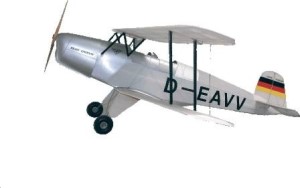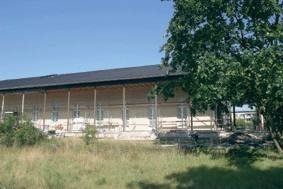A part of German aviation history
The name of the village Rangsdorf is until today tightly connected with sports flying and airplane building - only - no sports or school plane are built here anymore and the airfield itself has also been deserted.

Only the ruins of the former Bücker- Airplane Factory remind of the time when since autumn 1935 the local factory produced the low-wing monoplane Bü 181 "Bestmann" or the biplane Bü 133 "Jungmeister" or Bü 131 "Jungmann".
The history started in the year 1935, when the then Reichsluftfahrtministerium (Aviation Ministry) determined the building of a land and water airport, a Reich's flying school, a Aero-Club-House and factory for the Bücker Flugzeugbau GmbH.

The Reich's airfield Rangsdorf, built by Prof. Dr.-Ing. Ernst Sagebiel, who was also the architect of the Reich's Aviation Ministry and the airport Tempelhof, was to become the new home for the sports flyer instead of Tempelhof.
The airport was opened on the 30th of July 1936 on the eve of the Olympic Games of Berlin and experienced in these days and also later several flying competitions with international participation.
From the 1st of September 1939 it was more or less over with recreational flying. Even though the newly built Bücker school planes still started at the air-base dominating were by now the planes with the swastika.
The Soviet airforce used the airfield and the Bücker factory after the war. Tranquillity returned to the village only in 1994 with the withdrawal of the Russian troops.

